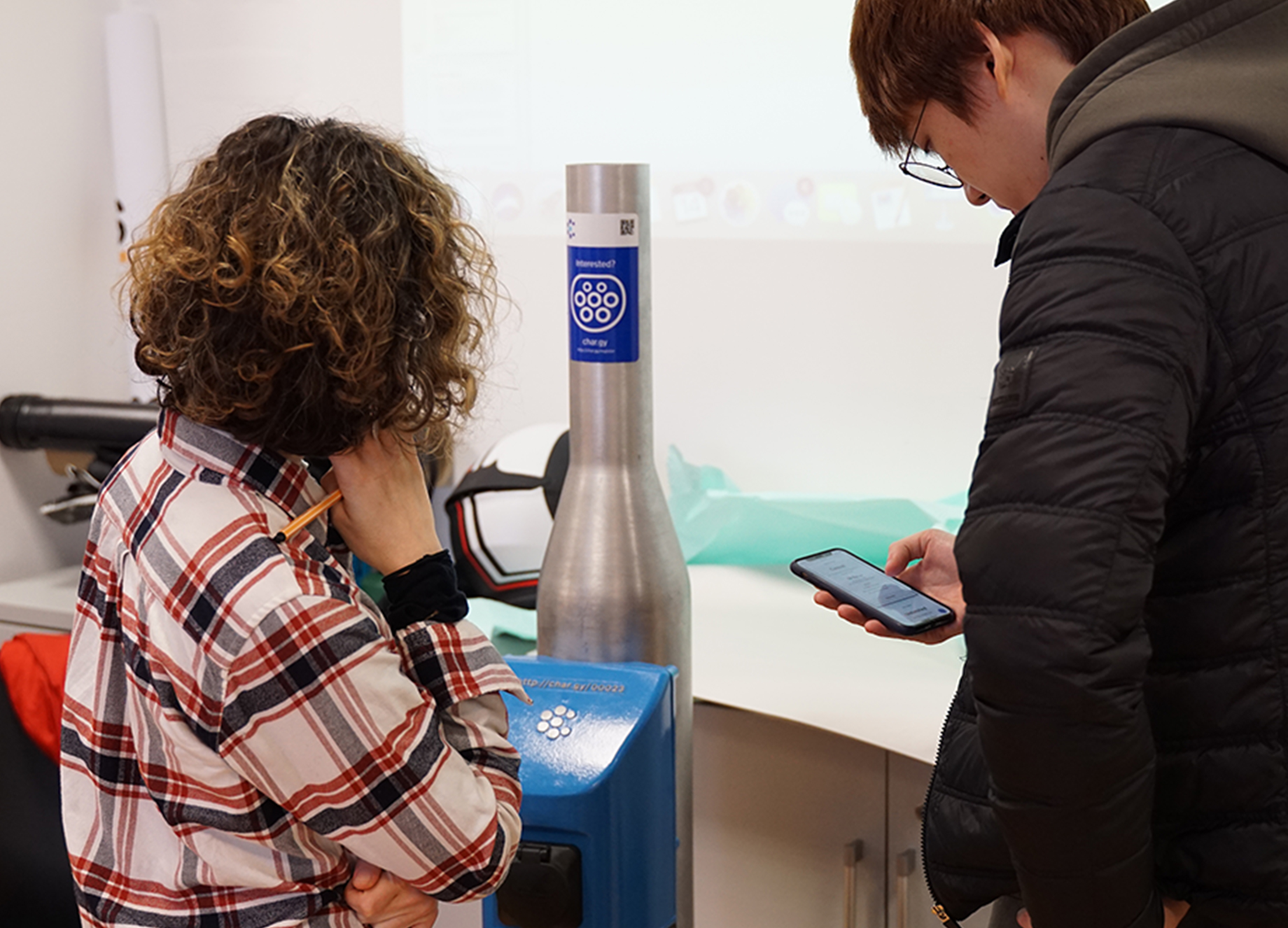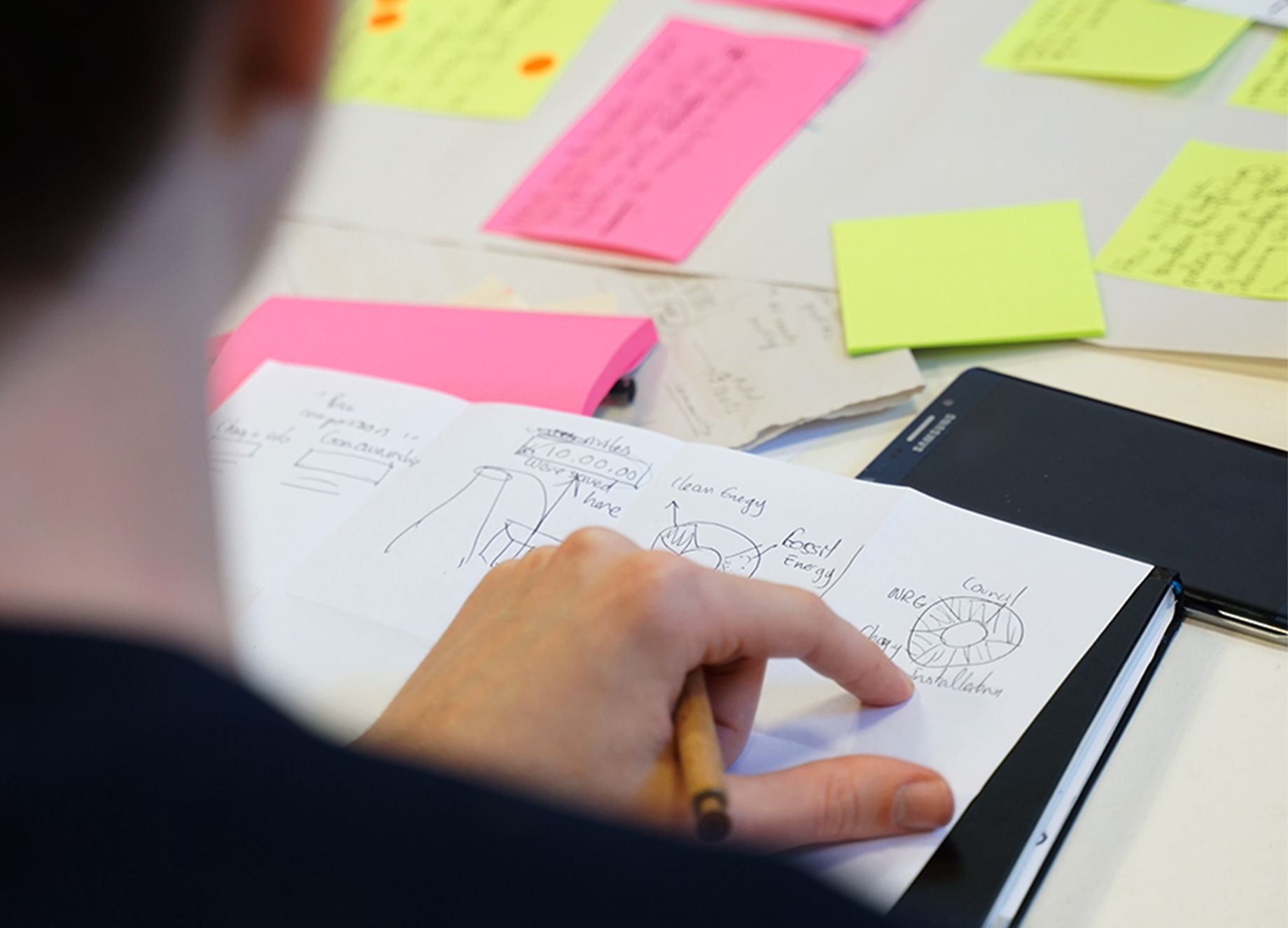Just over two years ago, I graduated from London College of Communication on the then MDes Service Design and Innovation course. This year, I was invited back to help out with the collaborative unit. This unit is all about collaborating with others, whether it’s stakeholders, service users or other designers. This is a project that takes place with a live project, in an industry setting. I travelled down to Elephant and Castle with Henry to talk on behalf of char.gy as the client that the students would work with.
Over the course of 8 weeks, the students worked in teams to undertake research, scope the landscape, and develop early prototypes based on some identified challenges faced by char.gy. We proposed six briefs, with some difficult challenges to give students a taste of working on a real world project. It was conducted in an agile way, following the kind of process that we might use in a regular project.

Each team received a different brief focusing on an area that could be improved.
Kick-off and demo
There’s a lot to get up to speed on with char.gy, the kick-off session covered the landscape of electric car charging, current trends, what common problems people have with electric charging and what potential areas for improvement might be. To get the students up to speed, we played back the findings from our user testing sessions and results of interviews with our users to help with foundational research. After a kick-off workshop, students got a chance to use our demo charge point unit, and get to know the product first hand.

Students interacting with the charge point using their own phones to understand the existing user experience.
Co-designing new solutions
After a sprint of completing research activities around their selected briefs, the students brought a list of pain points to opportunity areas to start to work towards new solutions.
Through guided workshops, the students were able to learn some staple prototyping techniques such as journey mapping, pain points, 'How Might We' statements, crazy eights and concept sketching.

Using crazy eights to quickly come up with new ideas.
Student stories
The main focus of the project was to give students an idea of the environment designers work in, and how to collaborate with other stakeholders. I’ll now pass over to the students themselves to describe their learnings...
Jesse Lai
Halfway through the project, we were struggling with our direction, and we found that the traditional double diamond wasn't matching our design process. So, we sought out helpful model from other sources. We found that the Double Diamond from Continuum innovation was perfect for us. So, we use that model to guide us step by step.
One of the biggest factors in this project for us was time limitation, and this turned out to be our biggest learning. Over the course of the project, we created many unique tools for our team to save time and to share understanding quickly.

Examples of how Jesse's team created new tools to collaborate.
Jennifer Glasser
In order to improve any product, experience or service, as designers, we must first understand the existing user experience journey, tune into the opportunities that arise and glean valuable insights to work from. At the time of our project, Char.gy had two existing charging posts, a small user base, and a service that was not yet fully developed. Our team needed to be resourceful in order to access users to interview.
In order to overcome this challenge, we utilized a few strategies and tactics. For example, we began with some guerilla research (on-the-street interviews) to observe and talk to EV owners in general. We had some success meeting with users of other competitive services (such as Ubitricity, PodPoint) and gained some insight around their experiences.
Using the “Service Safari” method was particularly helpful in gaining valuable insights to the user experience. Our teammate rented an EV car and went through the entire journey of planning, locating and using a Char.gy lamppost charger. Despite the fact that she was not an EV user and had never charged an EV car before, she was able to empathise as a “new user” and from this point, we could better understand the frustrations and confusion that a new user would encounter.

Excerpt from the service safari video undertaken to understand the service as a first time user.
Yutong Xiao
In the beginning, we conducted various research methods with teammates to ensure we encapsulated the background of the EV market demand in London. In particular, one of the challenges we faced was finding test users to talk in the time available. But significantly, three of our classmates did an auto-ethnography, personally trying to rent an electric car through car rental and driving it to the closest char.gy device — to ensure we got the knowledge and empathy that could enhance the further design process.
Overall, this project experience facilitated us to use different design methods, and have a more holistic view in designing the entire service process from both user perspective and business intervention. Thanks for this amazing experience!

